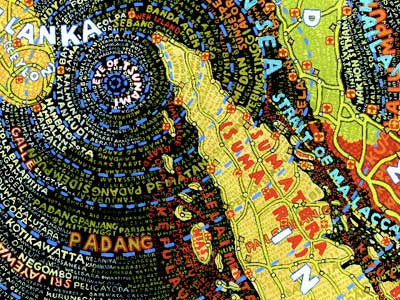After weeks of intensive work I have submitted my boards for the RSA 2009/10 competition.
Below you will find the presentation of my project along with the project report I also submitted.

The HoneyHome.com is a design project that revolves around the notion of a community focal point. It challenges the argument that large retail corporations are destructive to local communities. Since a local supermarket is a physical place that every member of the community visits frequently, it could, potentially, play an important role in the community life. The HoneyHome.com recognizes that opportunity and provides a new-age community focal point by introducing a new channel for multilevel communication, called ‘The Hive’.
The research into the existing and historic communities revealed that the nature of interaction between people is changing as a direct result of a rapid development in information and communication technologies. As the nature of human interactions changed, we moved away from the traditional model of community. In the ‘Digital Age’ the communities are no longer closed systems with clear geographic boundaries, stable memberships and few linkages with other communities. Instead, they are fragmented, geographically dispersed and, to a large extend, virtual or placeless.
I began to investigate the methods of restoring the lost community focal point locally by improving the communication between communities, supermarkets and individuals. Taking into consideration the role of local media in building and maintaining communities, I thought about designing a local magazine produced by the collaboration of a supermarket with journalism and design students from a local university. It seemed to solve the problem temporarily, but a steady decrease in popularity of print media made me look at digital and more future-friendly alternatives.
Inspired by an ever-increasing use of tangible technologies in our everyday life, I decided to design a digital device, which would create and reinforce links between local communities, supermarkets and their customers. And my idea - The Hive – took a form of a wall-size, multi-touch screen that allows several users to interact with its contents and with each other at the same time.
The very concept of networking derived from social insects, such as ants and bees, therefore, I based the interface design around a simple graphic representation of a honeycomb - the hexagon motif. It represents collaboration and, therefore, illustrates the key characteristic of a vibrant community. The honeycomb inspired the project name and the colours used for the campaign development.
HoneyHome.com does not require extensive advertising. The target audience comes to supermarkets regularly and a wall-size tangible device is almost certain to create a positive buzz within the community. However, in order to encourage people to use ‘The Hive’ and the associated website, a number of promotional activities are recommended.
The campaign logo with a catchy slogan, for example “Sweetening Your Local Community” or “Buzzing With Activity”, could be printed on carrying bags or on shopping baskets and trolleys. Similarly, locally sourced honey could be used for promotional purposes. A label branded with HoneyHome.com logo would inform people about the new service. Given away for free at the launch of the campaign, the honey would also help to leave a sweet and homely flavour on the community taste buds.














